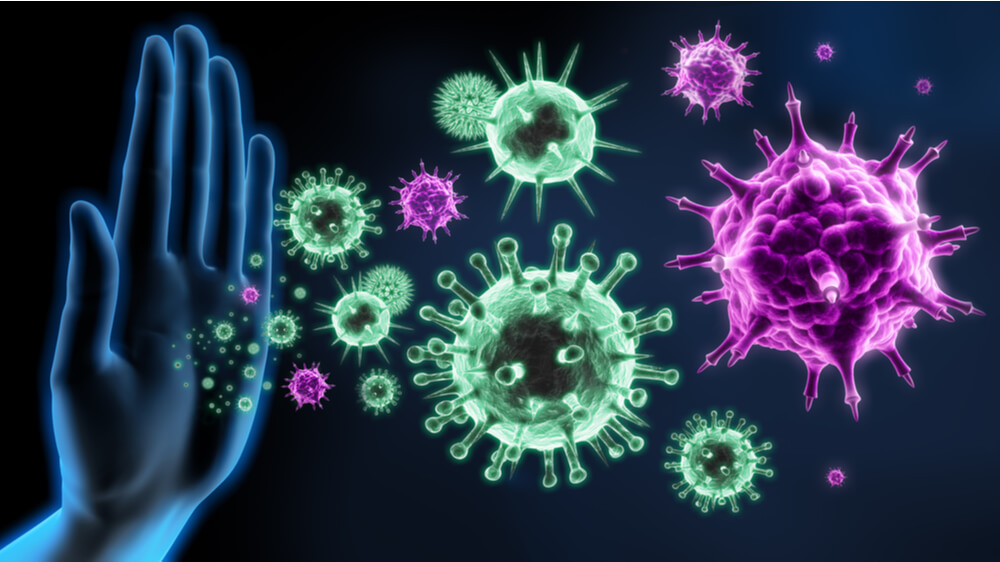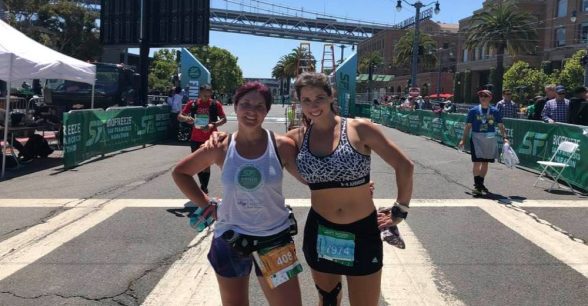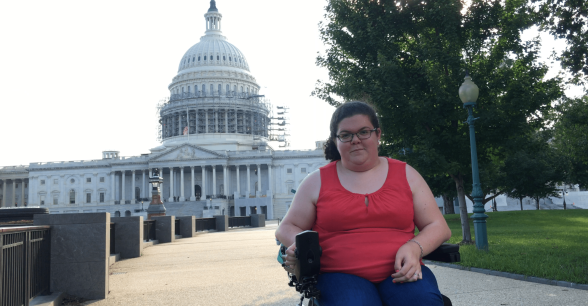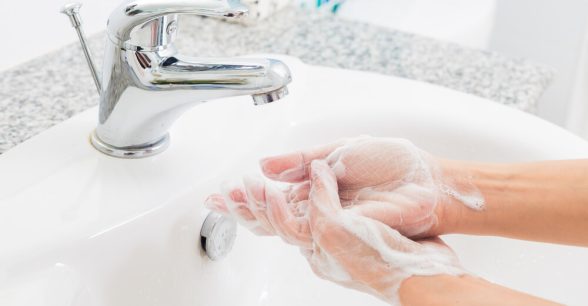Disability Accommodations and Supports Can Help Everyone Prevent COVID-19
The following post is part of our series on perspectives from disabled and chronically ill people regarding COVID-19. This post is not intended as medical advice.
In light of the current coronavirus pandemic, Infection Prevention Guidelines are important measures of minimizing the spread of infection. Disabled people are one group at higher risk of getting infected, getting more severely ill, receiving inadequate healthcare, and dying. So why do infection prevention guidelines seem to forget that disabled people exist?
Let’s take a look at how standard infection prevention advice is often difficult or impossible to follow for disabled people, and what accommodations and supports can help.
Wash Hands Frequently
Frequently and correctly handwashing with soap and water, kills germs on our hands. This keeps us safe from infection and stops infection from spreading.
But what about disabled people?
One needs to be physically able to access the sink, faucet, soap, and towel. One also needs to be physically able to wash and dry their hands. Many disabled people have physical impairments that make this difficult or impossible. Here are some accommodations that can help:
- Accessible handwashing locations
- Helping people get to the sink, wash, and dry
- Bringing people everything necessary so they can wash where they’re at
- Using alternatives if handwashing is impossible
It’s also important to recognize that handwashing is a multi-step task that requires neurological and intellectual processing, which can pose challenges for disabled people with neurological and/or intellectual impairments. Here are some accommodations that can help:
- Creating a detailed step by step guide to follow
- Handwashing instructions in text, pictures, video, audio
- Teaching proper handwashing technique
- Prompting and guiding the person as needed
- Not interrupting someone’s step by step process
- Using alternatives such as hand sanitizer if handwashing is impossible
Further, handwashing includes a lot of different sensory inputs one has to process. For disabled people with sensory processing impairments this can be difficult or impossible. Here are some accommodations that can help:
- Put a barrier between your hand and the cold metal faucet (e.g. a glove, washcloth, towel)
- Put a barrier between your ears and the sound of rushing water (e.g. ear defenders, earplugs)
- Use a drying method that doesn’t cause sensory distress (e.g. rough towel, smooth towel, paper towel, air dry)
- Use a soap that doesn’t cause sensory distress (e.g. liquid soap, bar soap)
- Use alternative cleaning methods if handwashing is impossible (e.g. washcloth, dry soap, wet wipes, disinfectant)
Avoid Touching Your Face
We touch many surfaces that have germs on them with our hands. If we then touch our faces, those germs can get onto our faces, and we can get sick. If we avoid touching our faces, we can minimize our risk of getting infected. But what about disabled people?
Many disabilities have traits like tics, or stimming that involve frequently touching one’s face, or licking items and surfaces. If this is involuntary, and/or compulsory, a person can’t just stop doing it. Here are some steps you can take if you can’t stop touching your face:
- Have someone remind you not to touch your face.
- Wear a face mask to block your hands from reaching your mouth and nose.
- Wash or disinfect your hands often.
- Disinfect your hands first thing every time you come home.
- Disinfect your hands every time you touch something others also touch.
- Don’t share food, drink, or tableware with other people.
- Regularly disinfect things you frequently touch and/or that come into contact with bodily fluids, such as:
- handles (e.g. doors, cabinets, drawers)
- switches and buttons (e.g. light, stove, dishwasher, washer, and dryer)
- countertops and tabletops
- bathroom fixtures (e.g. water faucets, toilet, sink, bathtub, shower)
- personal hygiene items (e.g. toothbrushes, brushes, tweezers)
- electronic devices (e.g. cellphone, tablet, laptop, keyboard, mouse)
- medical supplies
- mobility aids (e.g. wheelchairs, canes, splints)
Maintain Social Distancing
To minimize infecting ourselves or others, we should stay at least 2 meters (roughly 6 feet) away from other people, especially during coughs or sneezes. But what about disabled people?
Many disabled people live in institutional settings like nursing homes or group homes and come into frequent contact with other residents and staff. Others live in their own homes but have carers. Many need help with everyday tasks like getting dressed, personal hygiene, feeding, and daily medical care. Maintaining social distancing can become impossible. This is why everyone should make sure they don’t carry and spread germs so that they don’t infect disabled people who cannot take the same precautions.
Stay Home If You Are Sick or to Protect Yourself From Getting Infected
Staying home will both protect others from getting infected by you, and you from getting infected by others. However, to be able to stay home, one must have the necessary supplies. Disabled people might not be able to afford and/or go out to buy such supplies. Here are some ways you can help:
- If you can afford it, buy supplies not only for yourself but also for others
- If you can make supply runs, offer to also buy and deliver supplies for those in your area who can’t do it themselves
Things to Remember
To ensure disabled people can be as safe from infection as possible…
…please, be aware that disabled people can’t always do what would be ideal in infection situations. If a person’s disability makes following regular infection prevention guidelines impossible, ensure access to measures that work for them. Accommodations are key.
…please, don’t stockpile supplies you don’t actually need, that disabled people do need in their everyday lives – like protective face masks, disinfectant, and other medical supplies.
…please, don’t take infections lightly just because YOU will probably be fine if you get infected – because disabled people you end up infecting will often not be fine when they get sick. Follow infection prevention guidelines as well as you can, to protect yourself AND others.
Nobody stops a pandemic on their own. The more we care about and help each other, the better off we’ll all be.
About Rooted In Rights
Rooted in Rights exists to amplify the perspectives of the disability community. Blog posts and storyteller videos that we publish and content we re-share on social media do not necessarily reflect the opinions or values of Rooted in Rights nor indicate an endorsement of a program or service by Rooted in Rights. We respect and aim to reflect the diversity of opinions and experiences of the disability community. Rooted in Rights seeks to highlight discussions, not direct them. Learn more about Rooted In Rights




Whatever happen to people first language?
Hi Tim, great question! The ways in which people connect to disability – and the ways in which they connect disability to themselves – are deeply personal. For many, disability is at the core of their identity; for others, it is not. These identity preferences usually manifest in the form of language choice, either through use of person-first language or identity first-language (i.e., “person with a disability” or “disabled person”). We honor both and contributors to the Rooted in Rights Blog will always be the authority on how they identify themselves.
Great article but as I said, people first language.